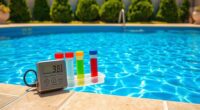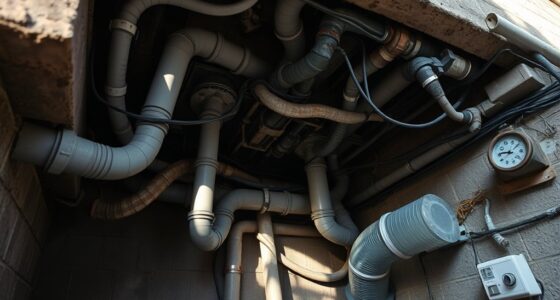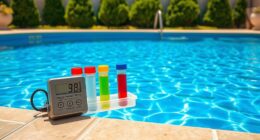Resurfacing is needed when your surfaces show signs of wear, like scratches, fading, or cracks, and it’s best done during mild, dry weather to guarantee durability. Costs vary based on size, material, and complexity, typically ranging from a few hundred to several thousand dollars. Hiring experienced professionals can boost quality and longevity, while DIY is suitable only for compatible surfaces and skilled individuals. Stay tuned for tips on choosing the right approach and managing your budget effectively.
Key Takeaways
- Resurfacing is needed when surfaces show wear, damage, fading, or stubborn stains that cleaning can’t fix.
- Common methods include overlaying, epoxy coatings, and grinding, with costs influenced by area size and surface complexity.
- Optimal timing involves scheduling during mild weather and low-traffic periods to ensure durability and minimal disruption.
- Professional support ensures proper surface prep, quality finishes, and clear communication on scope and costs.
- DIY resurfacing requires compatible materials and skills; otherwise, professional help is recommended to avoid costly mistakes.
Recognizing the Signs That Your Surfaces Need Refreshing
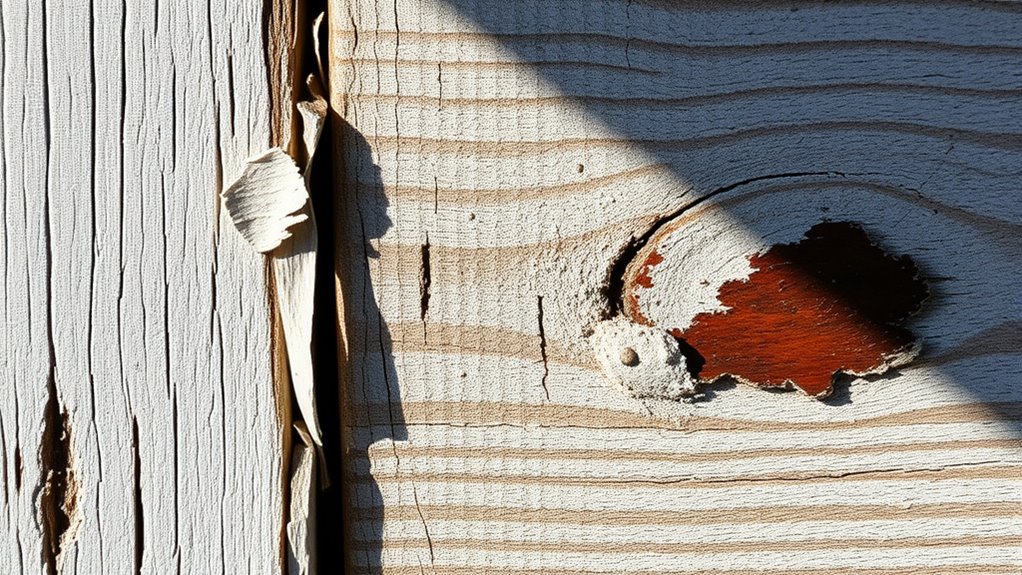
Over time, signs of wear and tear become impossible to ignore, indicating that your surfaces may need a rejuvenation. You might notice scratches, scuffs, or dullness that no amount of cleaning can fix. Faded colors or peeling finishes are clear indicators that your surfaces are losing their original appeal. If you see water stains, streaks, or discoloration, it’s a sign the surface’s protective layer has weakened. Cracks or loose tiles suggest structural issues that require attention. Persistent stains or grime that won’t come off also point to the need for resurfacing. Recognizing these signs early helps prevent further damage, saving you money and effort in the long run. When your surfaces show these symptoms, it’s time to contemplate rejuvenating them.
Timing Your Resurfacing Projects for Maximum Impact

Timing your resurfacing projects carefully can make a significant difference in their effectiveness and longevity. You should plan to resurface during periods of mild weather, avoiding extreme heat or cold, which can affect materials’ adhesion and drying times. Ideally, schedule your project when there’s minimal rain in the forecast, as moisture can compromise the surface’s integrity. Consider your daily routine—resurfacing during off-peak times minimizes disruptions and allows for proper curing. Also, avoid rushing into resurfacing right before major events or high-traffic seasons; giving yourself enough lead time ensures thorough work and maximum results. Monitoring local weather conditions closely helps you choose the best window, maximizing durability and appearance while reducing the risk of costly mistakes or rework. Additionally, understanding potential pitfalls in adopting new payment technologies can help you select the most reliable merchant services to support your project’s payment needs.
Common Types of Resurfacing and Their Benefits
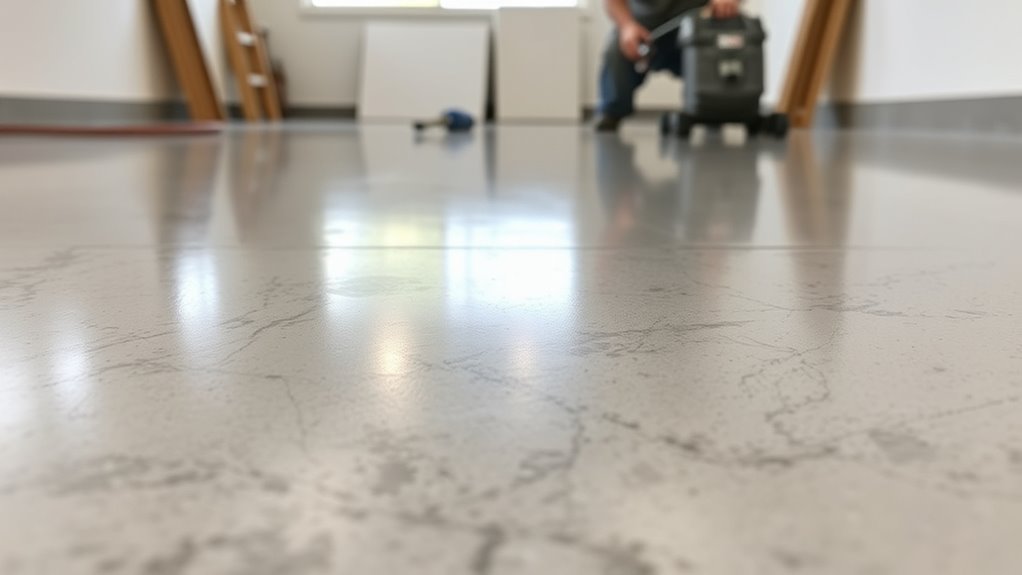
There are several common types of resurfacing, each designed to address specific needs and offer unique benefits. Overlaying is popular for quickly restoring worn-out surfaces, providing a fresh look without complete removal. Diamond grinding improves surface texture and safety, ideal for rough or uneven floors. Shot blasting cleans and prepares surfaces, enhancing adhesion for coatings. Epoxy coatings offer durability and chemical resistance, perfect for garages or industrial spaces. Polyurethane finishes add flexibility and shine, making floors more resistant to scratches. Acid etching creates a rough profile on concrete, improving bonding for sealants or coatings. Each type targets different issues, from aesthetic concerns to functional improvements, helping you extend the life of your surfaces effectively and efficiently. Additionally, dog breeds with unique traits can influence the type of surface treatments that best suit your environment, especially when considering durable and easy-to-maintain finishes.
Factors Influencing the Cost of Resurfacing Work
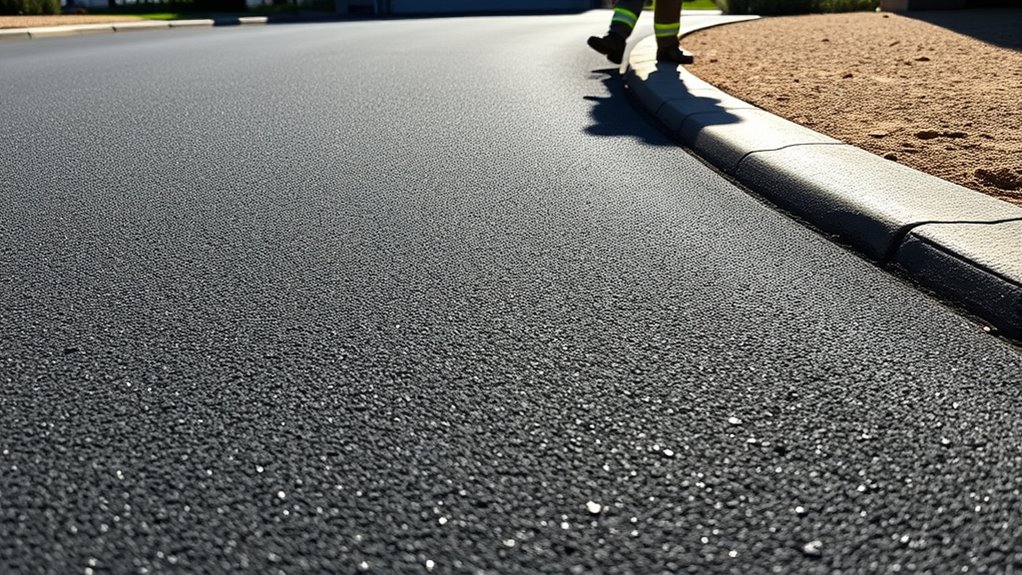
The cost of resurfacing work varies based on several key factors that influence both materials and labor. First, the size of the area directly impacts the price—you’ll pay more for larger surfaces. The complexity of the project also matters; intricate designs or uneven surfaces require extra time and skill, increasing costs. The type of resurfacing material you choose affects the price as well; high-end finishes or specialty products cost more than basic options. Location is another factor—urban areas often have higher labor rates than rural settings. Additionally, the condition of the existing surface can influence expenses; if prep work or repairs are needed, expect to pay more. Finally, timing matters, with peak seasons sometimes commanding premium rates due to higher demand. Proper surface preparation is essential for a successful resurfacing project and can impact overall costs.
Budgeting Tips for Successful Resurfacing Projects
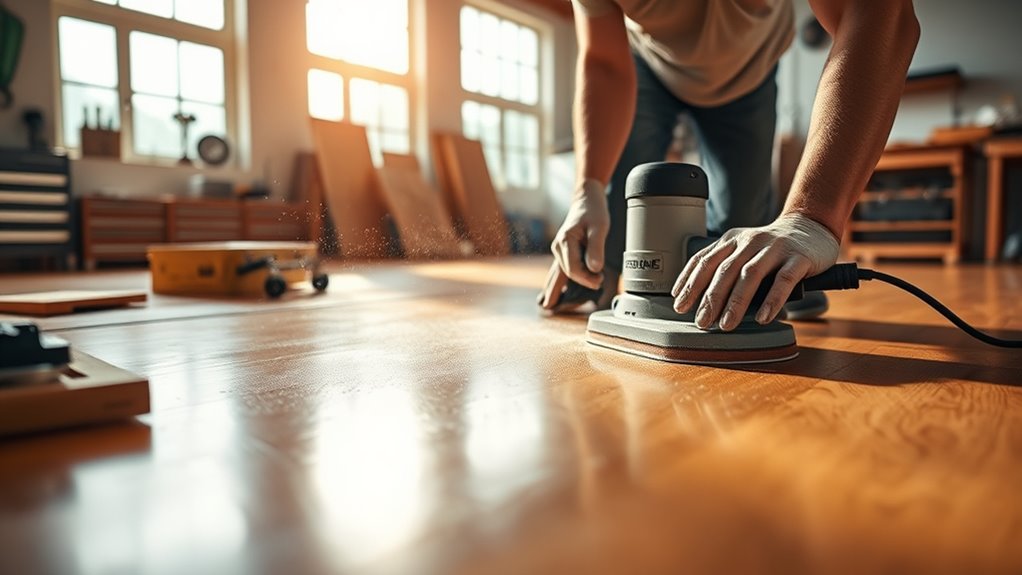
Creating a realistic budget is essential for a successful resurfacing project, and it starts with thorough planning. Begin by researching typical costs in your area to set a baseline. Include expenses for materials, labor, permits, and unexpected issues that might arise. Understanding tableware materials can help you choose durable and cost-effective options for your project. Prioritize your needs versus wants, and allocate funds accordingly. Always add a contingency buffer of 10-15% to cover unforeseen expenses. Track every expense throughout the process to stay on course, and avoid impulse upgrades that can inflate costs. Getting multiple quotes from reputable contractors helps ensure you’re paying a fair price. Stay flexible, but firm on your budget limits. Proper planning and disciplined spending will keep your project on track financially and help you avoid surprises down the line.
Choosing the Right Professionals for Your Resurfacing Needs
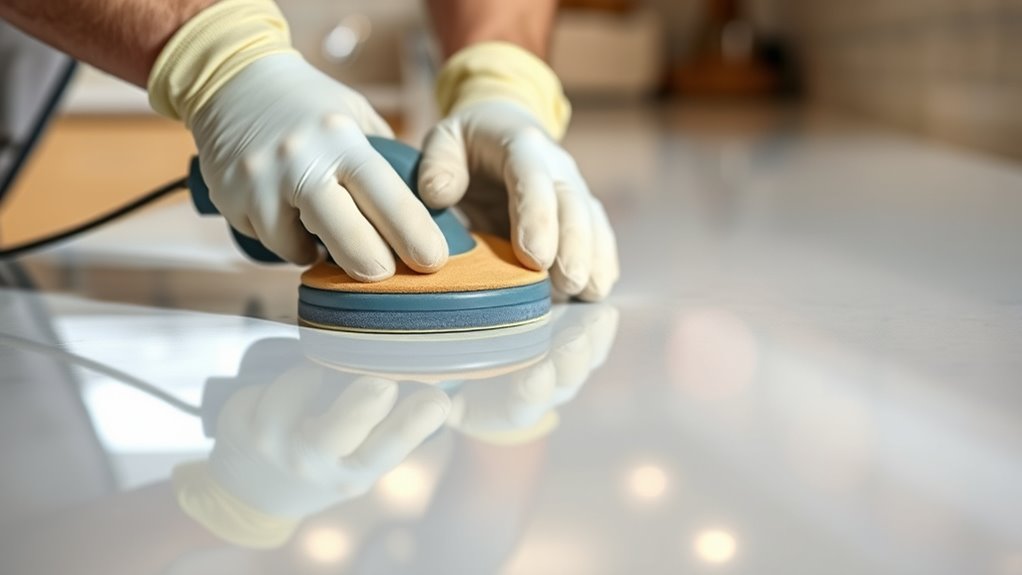
When selecting professionals for your resurfacing project, you want to guarantee they have the right credentials and certifications to do the job safely and effectively. Experience and expertise matter because seasoned contractors can handle unexpected issues and deliver quality results. Don’t forget to prioritize clear communication and transparency to keep your project on track and within budget. Additionally, understanding materials used in resurfacing can help you make more informed decisions about your project options.
Credentials and Certifications
Choosing the right professional for your resurfacing project starts with verifying their credentials and certifications. You want to confirm they’ve completed recognized training and hold valid licenses for your area. Certifications from reputable organizations show they meet industry standards and have committed to ongoing education. Don’t hesitate to ask for proof of their qualifications and verify their credentials through official databases or associations. This step helps you avoid unqualified or shady contractors who might cut corners. Certified professionals are more likely to follow safety protocols and deliver quality results. Remember, credentials aren’t just a formality—they’re a sign of expertise and professionalism that can save you time, money, and headaches in the long run. Always prioritize verified credentials when choosing your resurfacing expert. Additionally, ensuring your contractor understands existential themes in their work can reflect their dedication to ethical standards and quality craftsmanship.
Experience and Expertise
After verifying credentials and certifications, evaluating a professional’s experience and expertise assures they have the practical skills to handle your resurfacing project effectively. Look for a track record of similar projects, and ask for specific examples or references. An experienced professional understands different surface materials, techniques, and potential pitfalls, which helps prevent costly mistakes. They should demonstrate familiarity with the latest tools and industry best practices. Don’t hesitate to inquire about how long they’ve been specializing in resurfacing and their familiarity with your specific needs. A skilled expert can identify issues early, suggest effective solutions, and deliver a high-quality finish. Trusting someone with proven experience gives you confidence and peace of mind that your project will be completed properly and efficiently. Additionally, selecting a professional with extensive support breakfast experience ensures they are well-versed in the nuances of surface preparation and finishing techniques essential for a successful resurfacing job.
Communication and Transparency
Clear communication and transparency are essential when selecting a resurfacing professional, as they guarantee you stay informed and involved throughout the project. You want someone who openly discusses timelines, costs, and potential issues. To guarantee you choose the right professional, consider these factors:
- Clear explanations of procedures, costs, and timelines
- Prompt responses to your questions and concerns
- Honest assessments of project scope and challenges
- Transparent pricing with detailed estimates and no hidden fees
DIY Resurfacing: When It’s Possible and When to Call Experts
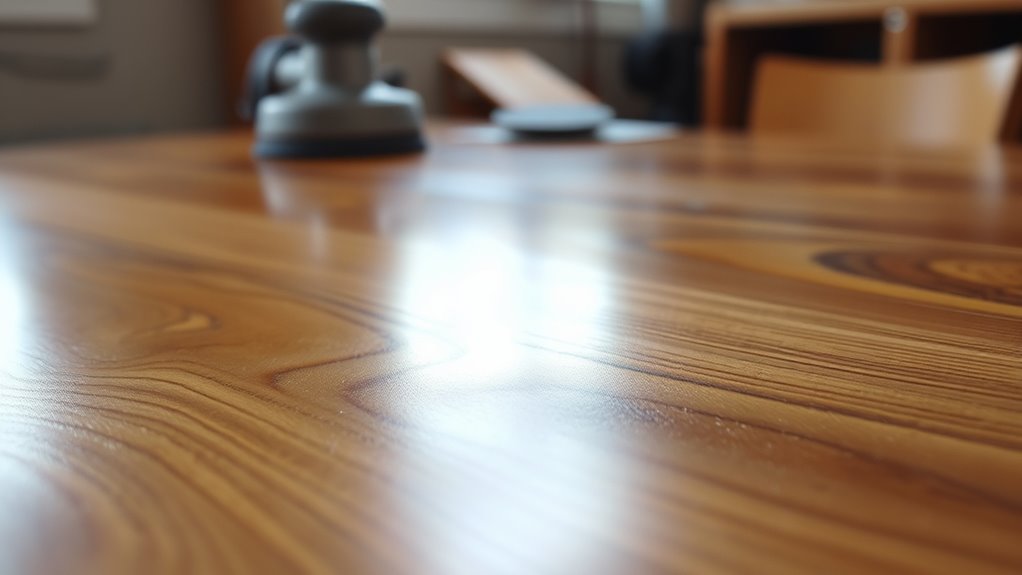
Before attempting DIY resurfacing, consider if your surface material is suitable and if you have the right tools. Your skill level and safety precautions are also essential factors in determining if you can handle the project yourself. When in doubt, calling in experts can save you time, money, and potential hazards.
Surface Material Compatibility
Are your surfaces suitable for resurfacing? Not all materials respond well to DIY techniques. To determine compatibility, consider these factors:
- Material Type – Some surfaces like ceramic or vinyl may not hold up to certain resins or coatings.
- Surface Condition – Cracks, deep stains, or extensive damage can interfere with adhesion.
- Porosity – Highly porous materials may absorb coatings unevenly, leading to poor results.
- Previous Coatings – Surfaces with old, peeling paint or incompatible finishes need proper prep or professional help.
If your surface matches these criteria, DIY resurfacing could work. If not, calling in experts ensures the job’s durability and safety. Properly evaluating material compatibility saves time, money, and frustration.
Skill and Equipment Needed
Resurfacing surfaces yourself can be straightforward if you have the right skills and equipment, but it often requires some basic knowledge of preparation, application techniques, and safety measures. You’ll need tools like sander, brushes, rollers, and protective gear. Skillful surface cleaning, proper mixing, and even application are key to a smooth finish. If you’re not confident with these steps, mistakes can be costly or unsafe. Additionally, understanding surface preparation is crucial to ensure durability and quality results.
Safety Considerations
While having the right skills and equipment is essential, safety should always come first when resurfacing surfaces yourself. Ignoring safety precautions can lead to serious injuries or accidents. Here are key safety considerations:
- Wear proper protective gear, including gloves, goggles, and masks, to prevent exposure to harmful dust and chemicals.
- Ensure good ventilation in your workspace to avoid inhaling fumes and dust.
- Follow manufacturer instructions carefully for all tools and products to prevent misuse.
- Keep your workspace tidy, removing obstructions and securing cords to avoid trips and falls.
- Understanding the sound healing science behind certain tools or techniques can help you choose the safest options for DIY resurfacing projects.
Always prioritize safety over speed. If you’re unsure or uncomfortable with any step, it’s best to call professionals for help.
Maintaining Resurfaced Surfaces for Longevity and Beauty

To keep your resurfaced surfaces looking their best and lasting longer, regular maintenance is essential. Clean them gently with a damp cloth or a mild cleaner to remove dirt and prevent stains. Avoid harsh chemicals or abrasive scrubbers, as they can damage the finish. Promptly wipe up spills to prevent staining or surface deterioration. Use protective pads or coasters on tables and countertops to prevent scratches or marks. Periodically reseal or apply a protective coating if recommended, especially for surfaces like countertops or concrete. Keep heavy objects off the surface to avoid dents. Regular inspections help identify early signs of wear or damage, allowing for timely repairs. Additionally, understanding surface protection techniques can significantly extend the lifespan of your resurfaced surfaces. Consistent care not only preserves the appearance but also extends the lifespan of your resurfaced surfaces.
Frequently Asked Questions
How Often Should I Resurface My Surfaces for Optimal Durability?
You should resurface your surfaces every 5 to 10 years, depending on usage and wear. Regular resurfacing maintains durability and keeps them looking fresh. If you notice chips, cracks, or fading, it’s time sooner. Keep an eye on high-traffic areas, and don’t wait until damage worsens. Proper maintenance extends the lifespan, so stay proactive with inspections and timely resurfacing to make certain your surfaces stay strong and beautiful.
What Are the Environmental Impacts of Different Resurfacing Methods?
Think of resurfacing as a bridge between durability and the environment. Some methods, like epoxy overlays, emit volatile organic compounds, impacting air quality, while grinding techniques generate dust and waste. Eco-friendly options, such as water-based coatings or recycling old materials, reduce harm. Your choice can help protect ecosystems and air purity, making resurfacing not just about surface renewal but also about safeguarding the planet for future generations.
Can Resurfacing Be Customized to Match Existing Decor Styles?
Yes, resurfacing can be customized to match your existing decor styles. You choose colors, finishes, and textures that blend seamlessly with your space. Whether you prefer a sleek, modern look or a classic, textured feel, professionals can tailor the resurfacing to complement your décor. This customization helps your surfaces look cohesive and stylish, ensuring the updated look enhances your overall interior design.
Are There Health Considerations When Choosing Resurfacing Materials?
When choosing resurfacing materials, you should consider health factors like off-gassing, allergens, and chemical sensitivities. Opt for low-VOC, non-toxic options that emit fewer fumes and are safe for you and your family. Always check labels, ask for eco-friendly certifications, and guarantee proper ventilation during installation. By prioritizing safety, avoiding harmful substances, and selecting non-toxic materials, you protect your health while enhancing your space’s beauty and functionality.
How Do I Assess the Long-Term Value of a Resurfacing Project?
You assess the long-term value of a resurfacing project by considering durability, maintenance costs, and aesthetic appeal over time. Think about how well the material withstands daily use and weather, and whether it aligns with your style preferences. Research warranties and reviews to gauge longevity. Balancing upfront costs with potential savings on repairs keeps your project financially sensible, ensuring you get lasting value from your investment.
Conclusion
Now that you know the ins and outs of resurfacing, you can confidently plan your projects to breathe new life into your surfaces. With a little careful timing and the right professionals by your side, your spaces will seamlessly reflect your style and care. Remember, a well-maintained surface is like a quiet smile—subtle, lasting, and always welcoming. Embrace the journey, and enjoy the renewed charm of your refreshed surroundings.

